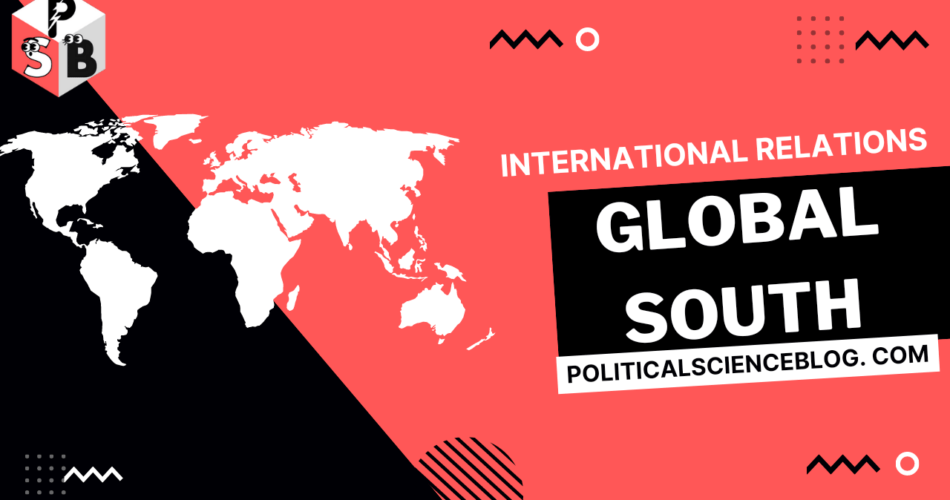The “North- South” categories were popularized by the Brandt Commission reports published in 1980 and 1983, both of which bore “North-South” in their titles. Over the following decades, “global” was attached to the “South” to form the contemporary compound term. The predicate was indicative of the globalization process that emerged in the 1990s. The United Nations Development Programme initiative of 2003, “Forging a Global South”, underlined the significance of the term and the new conceptualization of global relations it represented.
The term Global South has become fashionable very recently. In a bibliographic study by a group of German scholars, the first recorded use was in 1996. In 2004, the term “The Global South” appeared in just 19 humanities and social sciences publications, but by 2013, the number had grown to 248. The scholars who use it mainly associate it with some of globalization’s ills. While the countries of the Global North have not only stable states but also a robust public sector, the Global South is, to a far greater extent, subject to the forces of global Neoliberalism rather than enacting the very same forces.
The urge to come up with a new term highlights the uncomfortable reality of previous terms and the political connotations of the Global South concept. It is not just a term; it also has political weight – for better or worse. Leigh Anne Duck, who reflects on the Global South as co-editor of the journal “The Global South”, highlights the positive impact of the term. Compared with “Third World” and “Developing World,” she considers the term Global South to carry more weight in resisting hegemonic forces. But, as Rigg also highlights, the term should not be taken too literally, with the Equator dividing the world in two. Instead, it should be understood in the broader context of globalization or global capitalism. It is related to an economic division between rich and poor countries, with most people in the so-called Global South actually living in the northern hemisphere (for example, in India and China).
Which Countries Come Under Global South?
During the last decade, scholars and enlightened commentators have increasingly begun to speak of the Global South and the Global North. One attempt to produce an objective classification uses the UNDP’s Human Development Index to differentiate. In brief, the Global North consists of those 64 countries with a high HDI (most of which are located north of the 30th northern parallel), while the remaining 133 countries belong to the Global South.
The terms “Global North” and “Global South” divide the world in half, both geographically and economically. The Global North contains all countries north of the Equator in the Northern Hemisphere, and the Global South holds all of the countries south of the Equator in the Southern Hemisphere. This classification groups the Global North into the rich northern countries and the Global South into the poor southern countries. This differentiation is based on the fact that most developed countries are in the North, and most of the developing or underdeveloped countries are in the South.
The Global North includes Australia, Canada, Israel, Hong Kong, Macau, New Zealand, Japan, Singapore, South Korea, Taiwan, the United States, and all of Europe (including Russia).
The Global South includes Asia (except for Japan, Hong Kong, Macau, Singapore, South Korea, and Taiwan), Central America, South America, Mexico, Africa, and the Middle East (except Israel).” It includes both countries with medium human development (88 countries with an HDI less than .8 and greater than .5) and low human development (32 countries with an HDI of less than .5).
Three and a half billion people, i.e., three-quarters of humanity, live in the developing countries of the South. These countries vary greatly in size, development levels, and economic, social, and political structures. Yet they share a fundamental trait; they exist on the periphery of the developed countries of the North. Most of their people are poor; their economics are mostly weak and defenceless; they are generally powerless in the world arena. It is noticeable that the most distinguishable characteristic of the South is that the large majority of humankind lives in the developing South.


I appreciate, cause I found just what I was looking for. You’ve ended my 4 day long hunt! God Bless you man. Have a great day. Bye
Hi my friend! I wish to say that this article is awesome, nice written and include almost all significant infos. I?d like to see more posts like this.
What?s Taking place i’m new to this, I stumbled upon this I’ve discovered It positively useful and it has aided me out loads. I’m hoping to contribute & aid different customers like its aided me. Great job.
hello!,I really like your writing very so much! proportion we keep in touch extra approximately your article on AOL? I need an expert in this area to solve my problem. Maybe that is you! Having a look forward to peer you.